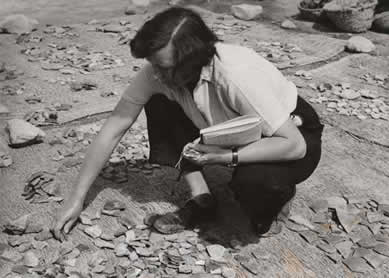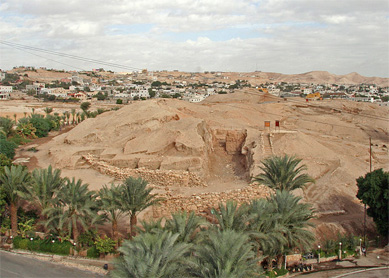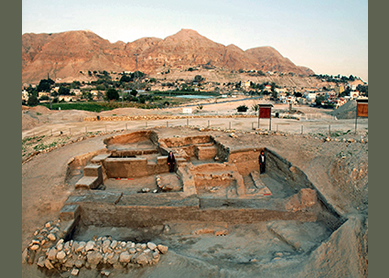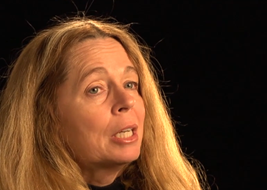The battle of Jericho—who doesn’t know the story?
The people of Israel, under the leadership of Joshua, marched around the town once a day for six days. On the seventh day they circled it seven times. The priests blew the trumpets, and the people “raised a mighty shout and the wall collapsed” (
Every excavator of Jericho has searched for the tumbled-down walls of Joshua, including British archaeologist John Garstang, who in 1930 suggested that he had found them. The matter finally seemed to be settled: archaeology had proven the biblical account. Who, then, would dare contest that?
Kathleen Mary Kenyon dared.
In the 1950s, Kenyon, a British archaeologist, was teaching Levantine archaeology at University College, London. Before World War II she had excavated several sites in England and had worked at Samaria in Palestine. When Garstang asked her to review the pottery he had found at Jericho, she agreed. Her conclusion: his evidence for the walls of Joshua was not compelling. A small expedition to the site would certainly clarify that—or so she thought.
As the newly appointed director of the British School of Archaeology in Jerusalem, Kenyon initiated a new excavation project at Jericho in 1952 and found that Garstang’s dates for the destruction of the site’s fortifications had been grossly wrong. The town walls he had attributed to the time of Joshua—the end of the Late Bronze Age—should be dated to the Early Bronze Age, almost two thousand years earlier.
How did she arrive at this conclusion? Kenyon introduced a new excavation technique in Palestine: the Wheeler box grid system, also known as the Wheeler-Kenyon method. No longer intent on exposing complete buildings, Kenyon concentrated instead on the stratigraphy, or layers, that could be distinguished in the soil: floors, foundation trenches for walls, debris from the destruction of houses, and accumulation of litter on streets. In this way Kenyon gained insight into site-formation processes and identified patterns of construction, use, and abandonment of buildings. Kenyon also fine-tuned the study of the excavated pottery and looked not only at complete pots, as most excavators before her had done, but also at the abundant broken pottery sherds found in each excavated layer. Using these methods, she could distinguish the surface levels that ran up to the remains of the walls in question, as well as the broken pottery found in these levels. And she found that this pottery was definitively Early Bronze Age in date.
The excavations at Jericho made Kenyon famous, and after finishing the dig in 1958, she went on to excavate at Jerusalem. She later became principal of St Hugh’s College in Oxford, was made Grand Officer in the Jordanian Order of Istiqlal, and was appointed Dame in the Order of the British Empire.
But not everybody applauded her work. From the beginning, her scientific methods attracted sharp criticism. Her methods were so time-consuming that she could only excavate small areas; some pointed out that Kenyon had not excavated a single complete house at Jericho. Her focus on thousands of soil layers and hundreds of thousands of small potsherds often kept her from seeing the big picture. Kenyon was also unable to produce the final publications of her excavations before her death in 1978. But her methods are still used and for many she is still the “Great Sitt”: the grand lady of archaeology in Palestine.
Bibliography
- Kenyon, Kathleen M. The Bible and Recent Archaeology, London: British Museum Publications, 1978.
- Davis, Miriam C. Dame Kathleen Kenyon: Digging Up the Holy Land. Walnut Creek, Calif.: Left Coast Press, 2008.
- Kenyon, Kathleen M. Digging Up Jericho: The Results of the Jericho Excavations, 1952–1956. London: Praeger, 1957.




